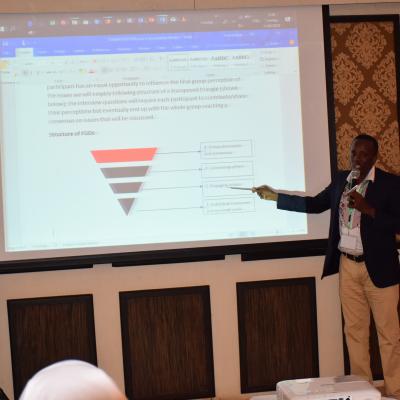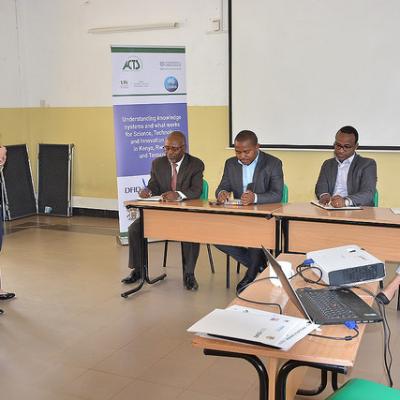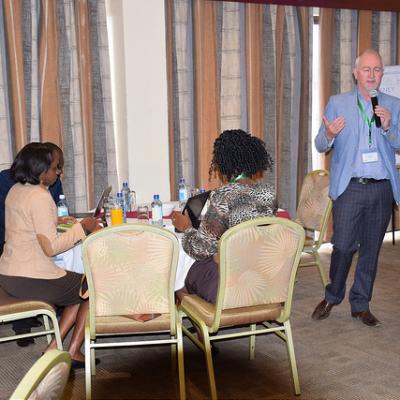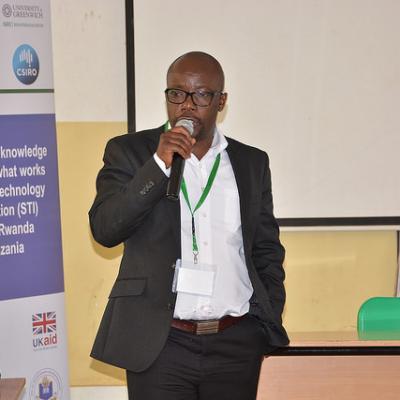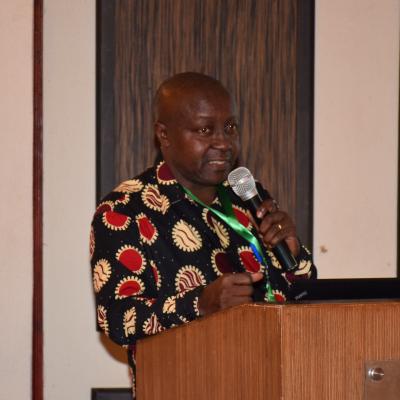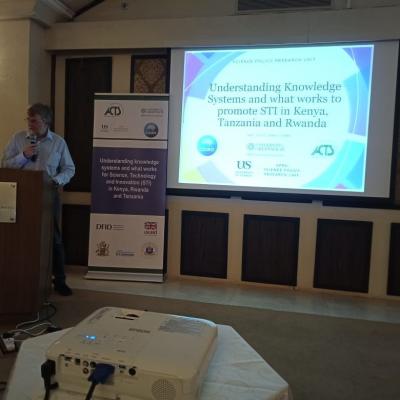Introduction
A stakeholders workshop organised by the African Centre for Technology Studies and the University of Nairobi was held at the Sarova Panafric hotel on the 29th of June, 2018 to mark the inception of the Knowledge Systems Innovation ‘KSI’ project. This project funded by the UK Department for International Development (DFID) through the East African Research Hub is implemented in Kenya, Rwanda and Tanzania with a goal of designing effective knowledge systems that produce high quality education, research, innovation and new technologies. The project is a North-South collaboration with the Natural Resources Institute (NRI), at the University of Greenwich, Science Policy Research Unit (SPRU), at the University of Sussex and the Commonwealth Scientific and Industrial Research Organisation (CSIRO).
This news brief provides some insights on Kenya’s Science, Technology and Innovation (STI) setting.
Insights from the workshop
It is true that science is designed to produce knowledge and technology that advances innovation and development. However, insights from the stakeholder discussions revealed that it should not be assumed that science will directly result to technological advancements and innovations. Much more must be done for Science, Technology and Innovation (STI) to develop and transform country’s economies and especially in Africa. Low and Middle-Income countries such as Kenya should not be left out hence the need to adapt to this evolving environment of both technological and non-technological innovations.
As part of transforming the STI system, Kenya has taken strides in shaping effective policy framework for STI through a number of progressive changes. Initially, Kenya’s system was anchored on the Science and Technology cap 250 of 1977 to ST&I Act, 2013. Earlier on, the policy did not account for aspects of innovation which had to be introduced in the ST&I Act of 2013. Integration of innovation would ensure commercialisation of technology hence economic development. To ensure promotion, coordination and regulation of the STI process, quality, funding and advisory linkage mandate, three arms whose roles are very discrete to one another were created in the recent ST&I Act, 2013. The National Commission for Science, Technology and Innovation (NACOSTI) is one of its arms and it exists to regulate and assure quality in the STI sector as well as act as an adviser to the government in matters thereto. The Kenya National Innovation Agency (KENIA) exists to develop and manage the national innovation system while the National Research Fund (NRF) exists to facilitate research for advancement of science. These were some of the key highlights about Kenya’s STI policy environment from Dr. Roy Mugiira of NACOSTI.
Despite Kenya making some strides, the STI is marked by different challenges. There is a lot of fragmentation of research due to research/knowledge institutions working in silos. The linkages between researchers, innovations and industry are also weak. This is largely due to lack of partnerships between private and public sector thus emphasising the critical role public-private partnerships play. Additionally, knowledge sharing and dissemination is weak as most research institutions and individuals are heightened with the fear of intellectual property loss. Dr. Roy further observed that the emphasis of the policy has been around production and regulations leaving out the dissemination and utility part. He mentioned that, the setting up of the national innovation agency, KENIA, will provide effective linkages amongst knowledge generation institutions and other stakeholders in the knowledge system and welcomed KSI and other stakeholders in the knowledge systems to address the missing link in utilisation.
Other significant concerns from the workshop participants were on issues of generational difference especially with review to Kenya’s STI policies. The policy generational gaps have prevented the country from capturing very fundamental technological aspirations and opportunities that are present hence Kenya’s lag in STI vis-à-vis the developed countries. Addressing this concern, Dr. Mugiira indicated that there is actually no standard period for policy review as it’s a government document and quite dependent on the leadership in place. However, he added that “The Kenyan constitution recognises the role of science, indigenous technologies in the development and there is a commitment of 2% GDP to scientific research in raising the quality of Science, Technology and Mathematics (STEM)”. Vision 2030 where STI is imbedded quite explains why the STI policy has taken quite some treads in Kenya and thus the advancement of the STI sub-sector towards realisation of a knowledge-based economy.

Dr. Roy Mugiira of NACOSTI during the presentation
A number of initiatives are attempting to address the challenges mentioned. Based on lessons shared from different initiatives such as Linking Industry with Academia (LIWA) and the Science Granting Council Initiative (SGCI), linking academia, industry and government is a major challenge and the various facts on how to create an effective STI are still lacking. More specifically, there is lack of adequate information on what is being done and associated capabilities of the various sectors. For instance, questions such as the adequacies and inadequacies of the private sector and how their capabilities can be linked to academia, have never been adequately addressed. There’s disparity on what the industry requires and what the academia - part of the knowledge system-produces. In-fact, Winnie Mbau in her presentation from LIWA outlined a mismatch between skills produced by academia and what the industry needs and thus their works on mapping industry links with academia. “The idea towards linking industry with academia is to facilitate institutions to think about how STI can spread and create value in the economy,” she alluded.
Questions on Kenya’s STI capabilities were also raised. “Kenya and moreso Africa, has never been a leader of the three-great revolutions”, a participant alluded. The industrial revolution, agricultural revolution and the technological/digital revolution have all been led outside Africa. Do we need to acquire and adapt foreign innovations? Prof. Ogara from the university of Nairobi expressed his concerns as he said that technologies and innovations are essentially small-steps towards constant aggression to move from one step to another and probably the reason KSI project would want to improve the effectiveness of knowledge systems.
It was noted that systemic issues in Kenya’s education system need be addressed to nurture inbreeding of STI at an early stage rather than introducing it further up the education system. Innovation, science and technology dwell so much with universities. What would be the appropriate starting point? Dr. JP Ochieng from the East Africa Research Fund, outlined that we need to start by listening to the evidence from indigenous systems and communicate effectively for the STI to make impact. Other systemic issues involved the inter-generational isolation especially for the youth who need space in the knowledge systems. Moving forward, there is need for a knowledge system for Kenya that leverages and takes advantage of the available young and creative population.
Further, there were discussions on ways of measuring effective knowledge systems (defined as a network of agents, institutions and processes involved in generation, dissemination and usage of knowledge) and whether we have indicators to do so. A few examples were selected to analyse what has worked and what has not worked in the Kenyan context. A case in point for what has worked was Safaricom’s M-Pesa; a mobile money transfer innovation. The income it generates as well as employment opportunities it has created especially for the youth are some of the reasons mentioned for its effectiveness. However, there were a lot of counter-arguments indicating that M-Pesa was not a Kenya innovation since it largely relied on external knowledge and foreign innovation signifying Kenya’s lack of high end scientific and technological expertise.
Suggestions were welcomed to look into what has worked in the telecommunications industry which is a sectorial analysis rather than the case study-M-Pesa as there might be other sectors within the industry that have worked. For what has not worked, there were quite insightful case studies as opposed to sector analysis. The cotton and sugar industry were outlined. In the cotton’s knowledge system, there exists only one agent, one researcher from the Kenya Agricultural and Livestock Research Organisation specialised in the cotton research. This shows weak research in the sector hence affects the generation of innovations and as a result this sector is slowly declining.
Way forward and next steps
Kenya’s STI needs to take a holistic approach that incorporates academia, research institutions and industry/private sectors. A proposed approach is to have a knowledge production system that is inclusive of both formal and informal sectors and actually invests in capabilities building with a one stop shop for all research in academia.
KSI project has just begun the stakeholder’s engagement workshops and will continue these discussions to ensure Kenya produces a high quality knowledge system in higher education, research, innovation and new technologies to drive the country’s economic development. These engagements will help attain experiences around the different perspectives.
A community of practice of the Knowledge Systems Innovation network will be established to continually inform the steps taken. The workshop outcomes will be translated into concrete courses of action with implementation of ideas generated.

